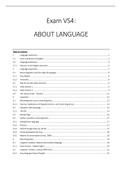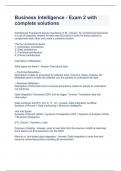Resume
Samenvatting Vakstudie Engels 4 (ENVS4): ABOUT LANGUAGE
- Établissement
- Arteveldehogeschool (Artevelde)
Samenvatting Vakstudie Engels 4 (ENVS4): ABOUT LANGUAGE Dit document bevat:ABOUT LANGUAGE - info van PPT - info lessen - extra links - overzichtelijke weergave van alle leerstof
[Montrer plus]












